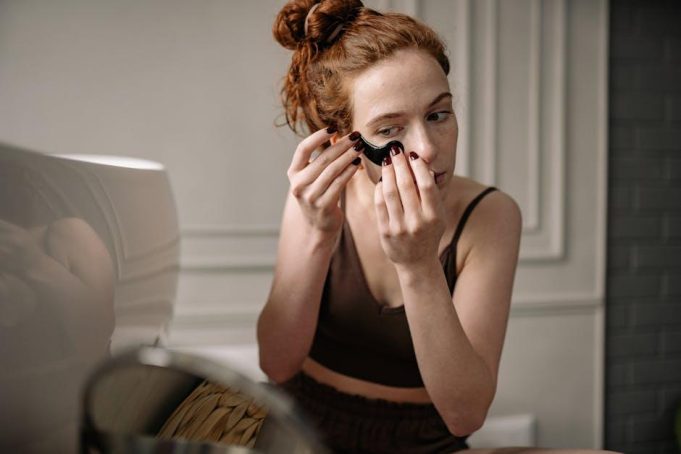In a world where the quest for youthful skin is as timeless as the wrinkles we seek to erase, a new contender has emerged in the beauty battleground: anti-wrinkle patches. Promising a non-invasive solution to age-old concerns, these patches have sparked curiosity and skepticism in equal measure. As we delve into the realm of these adhesive marvels, we seek to uncover the truth behind the claims. Do they hold the power to smooth away the signs of time, or are they simply another fleeting trend in the ever-evolving landscape of skincare? Join us as we explore the science, the myths, and the realities of anti-wrinkle patches, aiming to reveal whether they are a genuine breakthrough or just a wrinkle in the tapestry of beauty innovations.
Understanding the Science Behind Anti-Wrinkle Patches
The concept of anti-wrinkle patches revolves around the principle of occlusion, which involves covering the skin to enhance the penetration of active ingredients. These patches are often infused with a variety of skin-benefiting components, such as hyaluronic acid, peptides, and antioxidants. By applying the patch, these ingredients are delivered directly to the skin, potentially improving hydration and elasticity, which can temporarily reduce the appearance of fine lines.
- Hyaluronic Acid: Known for its ability to retain moisture, it helps plump the skin.
- Peptides: These are short chains of amino acids that can stimulate collagen production.
- Antioxidants: Protect the skin from environmental damage and may improve overall skin health.
Moreover, the physical act of wearing a patch may help smooth the skin by keeping it taut and preventing further creasing during use. While these patches can offer a short-term solution for smoother-looking skin, their effectiveness can vary based on the quality of ingredients and individual skin types.

Comparing Patches to Traditional Anti-Aging Methods
In the realm of skincare, anti-wrinkle patches have emerged as a modern contender against traditional methods, promising a targeted approach to reducing the signs of aging. These innovative patches work by delivering active ingredients directly to the skin, often using a time-release mechanism to ensure prolonged exposure. Unlike traditional creams and serums that can sometimes feel heavy or greasy, patches offer a lightweight, breathable alternative that fits seamlessly into a busy lifestyle. But how do they stack up against time-tested methods like retinoids, chemical peels, and microdermabrasion?
- Convenience: Patches are easy to apply and remove, often used overnight or during downtime, making them a practical choice for those with a hectic schedule.
- Targeted Treatment: They allow for precision in treating specific areas, such as crow’s feet or forehead lines, which can be a challenge with more generalized treatments.
- Minimal Irritation: With their controlled delivery system, patches may cause less irritation compared to potent topical solutions, which can be harsh on sensitive skin.
However, traditional methods have their own merits, offering more comprehensive solutions through professional treatments and a wide range of formulations tailored to different skin types. Ultimately, the effectiveness of patches versus traditional methods may depend on individual skin concerns and personal preferences. For some, the futuristic allure of patches might just be the perfect addition to their anti-aging arsenal.

Expert Opinions on the Efficacy of Wrinkle Patches
When it comes to tackling those pesky lines and creases, the world of skincare is abuzz with varied opinions from dermatologists and skincare experts. Dr. Samantha Collins, a renowned dermatologist, emphasizes that while wrinkle patches can offer temporary plumping effects, they may not be a substitute for more permanent solutions like retinoids or professional treatments. She notes, “These patches often contain ingredients like hyaluronic acid, which can hydrate and plump the skin, but the effects are typically short-lived.”
- Dr. James Li, a cosmetic chemist, suggests that wrinkle patches can be a useful addition to a skincare regimen, especially for special occasions.
- Dr. Elena Martinez, a skincare researcher, points out that consistent use might lead to slight improvements in skin texture due to the occlusive nature of the patches, which helps in moisture retention.
while experts acknowledge the potential benefits of wrinkle patches, they stress the importance of managing expectations and combining them with a comprehensive skincare routine for optimal results.

Practical Tips for Choosing the Right Anti-Wrinkle Patch
When it comes to selecting the ideal anti-wrinkle patch, there are several key considerations to keep in mind to ensure you get the most out of your skincare routine. Start by evaluating the ingredients. Look for patches infused with proven anti-aging components like retinol, hyaluronic acid, or peptides. These ingredients are renowned for their ability to promote collagen production and enhance skin elasticity. Additionally, consider patches that offer a hydrating effect to keep your skin supple and smooth.
- Material: Opt for patches made from breathable materials like silicone or hydrogel to ensure comfort and effectiveness.
- Adhesive Quality: Choose patches with a gentle yet secure adhesive to prevent skin irritation while ensuring they stay in place overnight.
- Skin Type Compatibility: Always select patches tailored to your specific skin type, whether it’s oily, dry, or sensitive, to avoid adverse reactions.
- Reviews and Recommendations: Check user reviews and seek recommendations to find tried-and-tested options that have worked for others with similar skin concerns.
By focusing on these factors, you can make an informed decision that aligns with your skin care goals, ensuring that your investment in anti-wrinkle patches yields the desired youthful glow.































